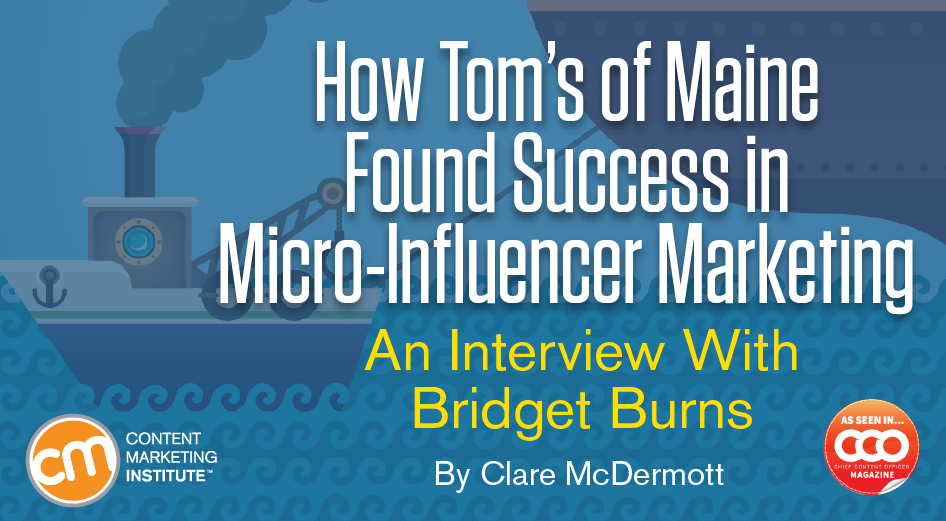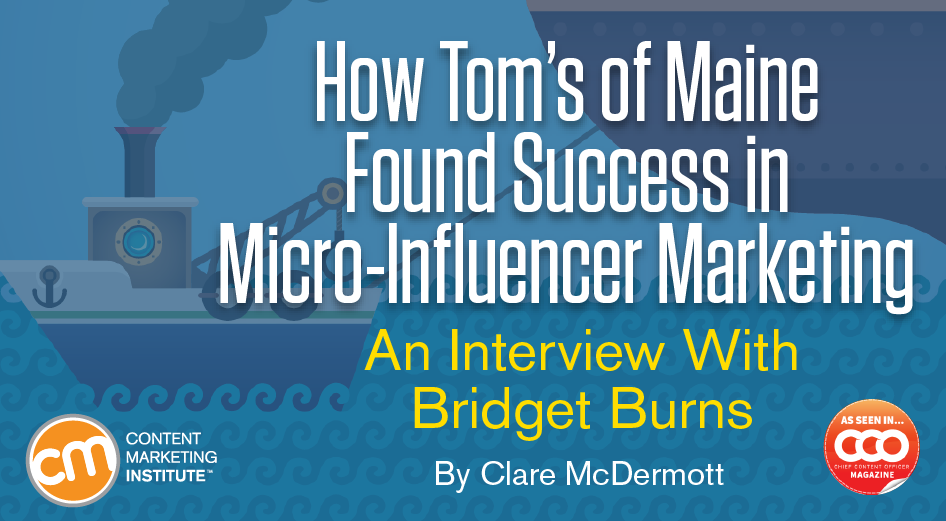We’ve created a community for them, and then we share content and tell them that if they like it, they can share it with their followers. CCO: How did you build the influencer program? Basically, we took that same idea of sustaining our share of voice metric, but extended it to a much larger scale using a micro-influencer model. CCO: How does the community influencer program work? Burns: Mavrck hosts the community and members log in through their Facebook page. Burns: We’ve worked to recruit community members who have a genuine interest in the products we offer. We also give our community members rewards like Tom’s of Maine gear. Risks and rewards marketing influencer programs Bridget’s experience at Tom’s of Maine is a great example of going beyond the traditional or big-audience influencers. Whether you want to address a micro or a macro issue of content marketing, make plans today to attend Content Marketing World 2018. Feel free to include additional tools in the comments (from your company or ones that you have used).

Influencer marketing is about growing your audience and leveraging the voice of well-connected people … but using influencers with the biggest audiences isn’t always the answer.
Tom’s of Maine uses a micro-influencer model to get the word out about its line of natural products. Bridget Burns, community manager for Tom’s of Maine, explains in this Q&A how micro-influencer marketing works for a brand that values substance over sizzle. (Bridget left Tom’s of Maine in September 2017 after this interview was complete.)
CCO: What is micro-influencer marketing?
Burns: Our micro-influencer program seeks superfans of Tom’s of Maine. These are not people who charge money or make a career out of influencer marketing; they are real people who enjoy the opportunity to engage with our brands. We’ve created a community for them, and then we share content and tell them that if they like it, they can share it with their followers. Because it’s not transactional (i.e., they are not paid), it feels very genuine.
CCO: How did you build the influencer program?
Burns: When we began experimenting with influencer marketing using tools like SheSpeaks and Klout, we noticed spikes in our online share of voice for the length of the program … then it would go back down to normal. Our agency team came up with the idea of creating what we call a Goodness Circle. It’s a year-round program with a dozen bloggers; we contract them to write a certain number of posts about our brand each year.
We sometimes feature their content on our channels, and we co-host monthly Twitter parties with them on various subjects related to our brand. The launch of The Goodness Circle was a success, but its impact is limited because our budget only allows for a certain number of bloggers. We started to consider how we could replicate the success of the program at scale.
Someone from Mavrck, a micro-influencer marketing platform, contacted me while we were wrestling with this problem. It was the perfect fit for our needs. Basically, we took that same idea of sustaining our share of voice metric, but extended it to a much larger scale using a micro-influencer model.
CCO: How does the community influencer program work?
Burns: Mavrck hosts the community and members log in through their Facebook page. We recruited our members via our social media channels and email campaigns – our first…

COMMENTS